Three Rings for the Elven — kings under the sky , SevenВ forВ theВ Dwarf-lords in their halls of stone, Nine for Mortal Men doomed toВ die, OneВ for the Dark Lord on his dark throne In the Land of MordorВ where the Shadows lie.
J. R. R. Tolkien,
The Lord of the Rings
Evidently, every one of us knows that a creature dealt lethal damage goes to graveyard, and that if a player is unable to draw a card from the library he or she loses the game. But here is a not-so-evident question: why exactly? And when exactly?
In order to sort this out, we need to study the second ground of Magic — it is time for us to delve into the depths of rules dedicated to State-Based Actions (SBA). Whenever a player would gain priority, as well as in cleanup step, the game checks the game state for 23 (+1*) special conditions. Based on these checks, it performs special actions — SBA. These actions have the following features:
- They are not controlled by players — SBA are ran by the game without involving players.
- They do not use the stack.
- They happen at very specific moments of time — when a player would gain priority (as well as at cleanup step). Unlike triggers which happen at any moment of the game, even when casting a spell), SBA do not react to the game state outside the prescribed moment of checking.
- They are checked all at once, and happen all at once.
- If at least one SBA has happened, all of them are checked again.
704.3. Whenever a player would get priority (see rule 116, “Timing and Priority”), the game checks for any of the listed conditions for state-based actions, then performs all applicable state-based actions simultaneously as a single event. If any state-based actions are performed as a result of a check, the check is repeated; otherwise all triggered abilities that are waiting to be put on the stack are put on the stack, then the check is repeated. Once no more state-based actions have been performed as the result of a check and no triggered abilities are waiting to be put on the stack, the appropriate player gets priority. This process also occurs during the cleanup step (see rule 514), except that if no state-based actions are performed as the result of the step’s first check and no triggered abilities are waiting to be put on the stack, then no player gets priority and the step ends.

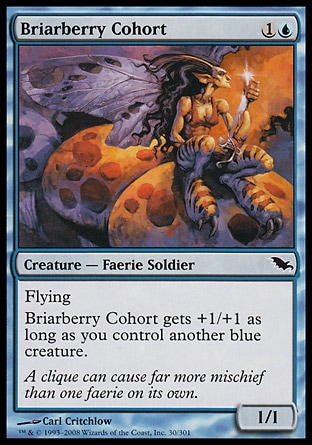
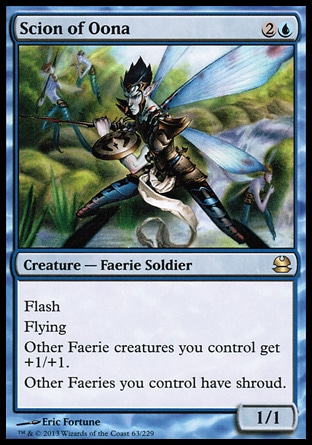
How do we memorize these twenty-something actions? By dividing them into areas of effect. Remember the professor’s stately “Three Rings for the Elven-kings under the sky...”?
SBA related to losing the game:
704.5a. If a player has 0 or less life, he or she loses the game.
704.5b. If a player attempted to draw a card from a library with no cards in it since the last time state-based actions were checked, he or she loses the game.
704.5c. If a player has ten or more poison counters, he or she loses the game.

If a player in control of a Lich’s Mirror has 10 poison counters, upon the first SBA check, instead of losing the game, he shuffles his hand, graveyard, all permanents (including Lich’s Mirror) he owns into his library, then draws 7 cards and gains 20 life.
Since one SBA has happened (even though the player didn’t actually lose, the action was completed — and replaced by an effect), SBA are checked again. The player still has 10 poison counters, and Lich’s Mirror is no longer on the battlefield. The player loses the game.
*In playoff matches there may be another SBA related to losing the game. Since such matches may not be drawn, the ending procedure changes after the five additional turns (three additional turns in Two-Headed Giant variant), the winner is determined by life total. If the life totals of the players (teams) are equal (or the last game hasn’t started yet), the game continues with an additional SBA:
MTR 2.5. ...if a player does not have the highest life total, he or she loses the game.
SBA related to the “death” of a creature, planeswalker, saga or battle.
704.5f. If a creature has toughness 0 or less, it’s put into its owner’s graveyard. Regeneration can’t replace this event.
704.5g. If a creature has toughness greater than 0, and the total damage marked on it is greater than or equal to its toughness, that creature has been dealt lethal damage and is destroyed. Regeneration can replace this event.
704.5h. If a creature has toughness greater than 0, and it’s been dealt damage by a source with deathtouch since the last time state-based actions were checked, that creature is destroyed. Regeneration can replace this event.
704.5i. If a planeswalker has loyalty 0, it’s put into its owner’s graveyard.
704.5s. If the number of lore counters on a Saga permanent is greater than or equal to its final chapter number and it isn’t the source of a chapter ability that has triggered but not yet left the stack, that Saga’s controller sacrifices it. See rule 714, “Saga Cards.”
704.5v. If a battle has defense 0 and it isn't the source of an ability that has triggered but not yet left the stack, it's put into its owner's graveyard.
Note that SBA checking toughness 0 or less doesn’t destroy creatures! They just is put into its owner’s graveyard. It’s important for Regeneration and Indestructible.
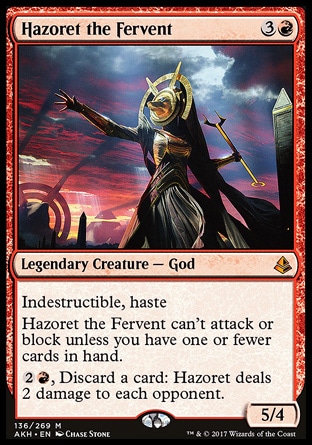

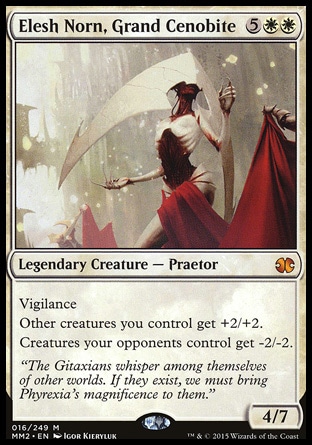
Assume that an player controls Hazoret the Fervent. His cunning opponent casts Pyroclasm and than Elesh Norn, Grand Cenobite.
Hazoret’s toughness becomes equal 2 and it has 2 damage is marked on it. As SBA performer Hazoret should be destroyed as a creature with lethal damage, but it stays on the battlefield because of Indestructible.
SBA related to deathtouch is special. It only checks for damage that has been deals since SBA were checked last time. If the creature didn’t die upon the SBA check, it will survive the next SBA check as well (if we are talking only about taking damage from a source with deathtouch):
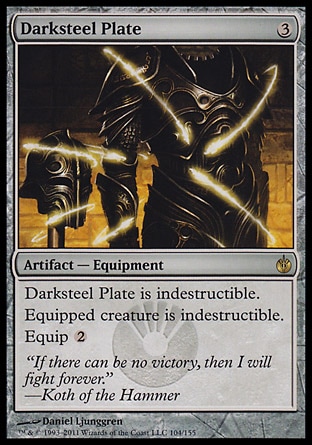
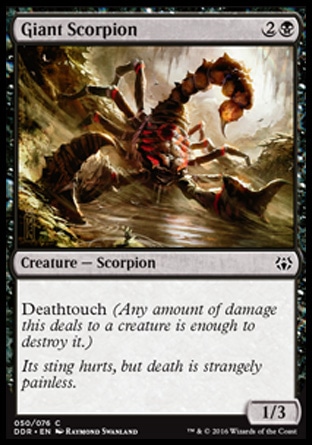
An opponent attacks you with a Giant Scorpion, you block with Bear equipped with Darksteel Plate. The bear takes one damage from a source with Deathtouch. Upon the next SBA check it isn’t destroyed due to Darksteel Plate’s ability. If you attach this equipment to another creature after that, the bear will no longer be indestructible, but it will not die because the SBA related to deathtouch have already been checked (and have not happened).
SBA related to auras, equipments and fortifications:
704.5m. If an Aura is attached to an illegal object or player, or is not attached to an object or player, that Aura is put into its owner’s graveyard.
704.5n. If an Equipment or Fortification is attached to an illegal permanent, it becomes unattached from that permanent. It remains on the battlefield.
704.5p. If a battle or creature is attached to an object or player, it becomes unattached and remains on the battlefield. Similarly, if any nonbattle, noncreature permanent that's neither an Aura, an Equipment, nor a Fortification is attached to an object or player, it becomes unattached and remains on the battlefield.
SBA related to Dungeons and Battles:
704.5t. If a player's venture marker is on the bottommost room of a dungeon card, and that dungeon card isn't the source of a room ability that has triggered but not yet left the stack, the dungeon card's owner removes it from the game. See rule 309, "Dungeons."
704.5w. If a battle has no player in the game designated as its protector and no attacking creatures are currently attacking that battle, that battle's controller chooses an appropriate player to be its protector based on its battle type. If no player can be chosen this way, the battle is put into its owner's graveyard. See rule 310, "Battles." 704.5x. If a Siege's controller is also its designated protector, that player chooses an opponent to become its protector. If no player can be chosen this way, the battle is put into its owner's graveyard. See rule 310, "Battles."
SBA related to (super)typesand roles:
704.5j. If a player controls two or more legendary permanents with the same name, that player chooses one of them, and the rest are put into their owners’ graveyards. This is called the “legend rule.”
704.5k. If two or more permanents have the supertype world, all except the one that has had the world supertype for the shortest amount of time are put into their owners’ graveyards. In the event of a tie for the shortest amount of time, all are put into their owners’ graveyards. This is called the “world rule.”
704.5y. If a permanent has more than one Role controlled by the same player attached to it, each of those Roles except the one with the most recent timestamp is put into its owner's graveyard.
SBA related to the existence of tokens and copies of spells:
704.5d. If a token is in a zone other than the battlefield, it ceases to exist.
704.5e. If a copy of a spell is in a zone other than the stack, it ceases to exist. If a copy of a card is in any zone other than the stack or the battlefield, it ceases to exist.
SBA related to counters:
704.5q. If a permanent has both a +1/+1 counter and a -1/-1 counter on it, N +1/+1 and N -1/-1 counters are removed from it, where N is the smaller of the number of +1/+1 and -1/-1 counters on it.
704.5r. If a permanent with an ability that says it can’t have more than N counters of a certain kind on it has more than N counters of that kind on it, all but N of those counters are removed from it.
SBA related to Space Sculptor:
704.5u. If a permanent with space sculptor and any creatures without a sector designation are on the battlefield, each player who controls one or more of those creatures and doesn't control a permanent with space sculptor chooses a sector designation for each of those creatures they control. Then, each other player who controls one or more of those creatures chooses a sector designation for each of those creatures they control. See rule 702.158, "Space Sculptor."
Finally, there are 8 SBA related to special variants of the game: Commander
704.6a. In a Two-Headed Giant game, if a team has 0 or less life, that team loses the game. See rule 810, “Two-Headed Giant Variant.”
704.6b In a Two-Headed Giant game, if a team has fifteen or more poison counters, that team loses the game. See rule 810, “Two-Headed Giant Variant.”
704.6c In a Commander game, a player that’s been dealt 21 or more combat damage by the same commander over the course of the game loses the game. See rule 903, “Commander”.
704.6d In a Commander game, if a commander is in a graveyard or in exile and that card was put into that zone since the last time state-based actions were checked, its owner may put it into the command zone. See rule 903, “Commander.”
704.6e In an Archenemy game, if a non-ongoing scheme card is face up in the command zone, and it isn’t the source of a triggered ability that has triggered but not yet left the stack, that scheme card is turned face down and put on the bottom of its owner’s scheme deck. See rule 904, “Archenemy.”
704.6f In a Planechase game, if a phenomenon card is face up in the command zone, and it isn’t the source of a triggered ability that has triggered but not yet left the stack, the planar controller planeswalks. See rule 901, “Planechase.”
Thus we get seven areas, for which it is much easier to remember all the contained rules.
A couple more rules are related to the fact that SBA are checked simultaneously and happen simultaneously:
704.7 If multiple state-based actions would have the same result at the same time, a single replacement effect will replace all of them.
Example: You control Lich’s Mirror, which says “If you would lose the game, instead shuffle your hand, your graveyard, and all permanents you own into your library, then draw seven cards and your life total becomes 20.” There’s one card in your library and your life total is 1. A spell causes you to draw two cards and lose 2 life. The next time state-based actions are checked, you’d lose the game due to rule 704.5a and rule 704.5b. Instead, Lich’s Mirror replaces that game loss and you keep playing.
This leads to conclusion that Regeneration may replace the result of several performed SBA:
If a source with Deathtouch deals 3 or more damage to Fiend of the Shadows, the latter falls under the effect of two SBA, both resulting in it being destroyed. Just one regeneration shield is enough to save Fiend of the Shadows.
704.8 If a state-based action results in a permanent leaving the battlefield at the same time other state-based actions were performed, that permanent’s last known information is derived from the game state before any of those state-based actions were performed.
704.8 Example:
You control Young Wolf, a 1/1 creature with undying, and it has a +1/+1 counter on it. A spell puts three -1/-1 counters on Young Wolf. Before state-based actions are performed, Young Wolf has one +1/+1 counter and three -1/-1 counters on it. After state-based actions are performed, Young Wolf is in the graveyard. When it was last on the battlefield, it had a +1/+1 counter on it, so undying will not trigger.
Rule infringements
If the players have skipped one of the SBA, the game comes to an illegal state. E.g. there are two Urborg, Tomb of Yawgmoth under a player’s control. In tournaments with Competitive REL such errors fall under section 3.6. Game Play Error — Game Rule Violation in the IPG.
Note that section 3.7. Game Play Error — Failure to Maintain Game State is issued when a player allows an opponent to break a rule of the game, and may potentially gain advantage of this error.
Some technically misplayed actions are not rule infringements:
Out-of-order Sequencing
Due to the complexity of accurately representing a game of Magic, it is acceptable for players to engage in a block of actions that, while technically in an incorrect order, arrive at a legal and clearly understood game state once they are complete.
All actions taken must be legal if they were executed in the correct order, and any opponent can ask the player to do the actions in the correct sequence so that he or she can respond at the appropriate time (at which point players will not be held to any still-pending actions).
An out-of-order sequence must not result in a player prematurely gaining information which could reasonably affect decisions made later in that sequence.
Players may not try to use opponent’s reactions to some portion of an out-of-order sequence to see if he or she should modify actions or try to take additional ones. Nor may players use out-of-order sequencing to try to retroactively take an action they missed at the appropriate time. In general, any substantial pause at the end of a completed batch is an indication that all actions have been taken, the sequence is complete and the game has moved to the appropriate point at the end of the sequence.
Examples:
- A player discards a card to pay for Masticore’s upkeep cost before untapping his or her land.
- A player resolves Harrow and puts the card into his or her graveyard, then searches.
- While resolving Restore Balance, a player discards before sacrificing lands and creatures.
- A player with two creatures being put into the graveyard due to state-based actions resolves the leaves-the-battlefield triggered ability on one of them before putting the other creature in the graveyard.
- A player declares a blocker, animates a Mishra’s Factory , and then attempts to block with that Treetop Village.
That’s it for today, and of course I have a homework for you.
Homework
You’re at 1 life, you control Jaya Ballard, Task Mage and face-up Fortune Thief. Your opponent is at 6 life. What will the result of the game be if you activate Jaya’s third ability?
Solution: You win the game.
Comment: When Jaya’s ability resolves, everyone takes 6 damage. Damage dealt to you reduces your life to 1 thanks to the ability of Fortune Thief who is sitting on the battlefield with 6 damage marked on it. Only after that do SBA happen: Jaya and the thief go to the graveyard, and your opponent loses the game (simultaneously).
You and your opponent are both at 4 life, you control Platinum Angel. What will the result of the game be if your opponent casts Hurricane with X=4?
Solution: You win the game.
Comment: As Hurricane resolves, everyone around takes 4 damage. The game state is as follows: lethal damage on the Angel and each player at 0 life. When SBA are performed for the first time you cannot lose because the Angel is still on the battlefield (all SBA happen simultaneously), and your opponent loses. The game ends immediately and you win, SBA are not checked again.
An opponent plays Volcanic Hammer targeting your 3/3 Magnivore. Will it die?
Solution: The magnivore is safe and sound.
Comment: As the hammer resolves, Magnivore takes 3 damage which are marked on it, and the hammer goes to the graveyard. Magnivore gets pumped to 4/4 immediately. When SBA are checked, we have a 4/4 Magnivore with 3 damage marked on it, and such a situation does not make SBA happen.
I recommend paying Tarmogoyf a friendly visit and thinking what would happen in his case.
You control face-up Thelonite Hermit and his 4 saprolings. An opponent activates Pyrohemia’s ability once. What happens?
Solution: Happy end - everybody dies.
Comment: As Pyrohemia resolves, each creature takes 1 damage. SBA are performed: the Hermit goes to the graveyard. The saprolings "shrink" to 1/1, the 1 damage still being marked on each of them. SBA are performed again, all creatures with lethal damage float towards the graveyard. *sob*
The token produced by Call of the Herd is “blinked” by Cloudshift. What happens?
SBA isn’t checked while a spell is resolving, and in fact, there was time (surprise!) when a blink would return a token to the battlefield. But since then, additional rules appeared:
110.5g. A token that has left the battlefield can’t move to another zone or come back onto the battlefield. If such a token would change zones, it remains in its current zone instead. It ceases to exist the next time state-based actions are checked; see rule 704.
And so, a token that left the battlefield humbly waits for its fate until the next time SBA are checked, upon which it vanishes for good.
You control Aeon Chronicler, you have 3 cards in hand. You cast Wheel of Fate. What happens?
As I just mentioned, SBA are not checked while a spell is resolving. Therefore, the game isn’t concerned with the fact that for a brief moment the Chronicler is a 0/0 creature. When the Wheel finishes resolving you will most likely have 7 cards in hand, and the Chronicler will reside on the battlefield as 7/7.
You control Wall of Roots with four 0/-1 counters (currently 0/1), can you put another counter on it and then activate Wall of Roots to pay for Convoke?
If we activate Wall of Roots’ mana ability in process of casting a spell with Convoke, then, as in the case with the Chronicler, the game doesn’t concern itself with its zero toughness. It’s possible to tap the wall to pay for convoke. After the spell is cast and it is SBA’s turn to do some action, the Wall will go to the graveyard.
Problem: Will it be possible to get mana off a Wild Cantor and use it for convoke? (Solution.)
The malicious opponent enchants your Bear Cub with Faith’s Fetters. You activate Eight-and-a-Half-Tails’ first ability targeting your bear. What happens?
After Tails’ ability resolves, the Bear will have protection from white, and as a result of the nearest SBA check the Fetters will go to the graveyard. Protection deserves some special attention.
You control Moonglove Changeling and Ib Halfheart, Goblin Tactician, you activate the changeling’s ability and attack with it. It is blocked by enemy Rampaging Baloths. What will the outcome of such combat be?
Solution: Death ripple.
Comment: The moment when the block is declared, Ib Halfheart, Goblin Tactitian’s ability triggers, and as it resolves (which, by the way, may happen not so soon, ref. Triggered abilities), the changeling will have to be sacrificed, resulting in him dealing 4 damage to the Baloth. Before the due player gets priority, the game realises that SBA have to be performed, and the Baloth will go to the graveyard as a creature that has been dealt damage by a source with Deathtouch.
You answer a judge call: “Juuudge, two turns ago this creature had lethal damage, but we counted toughness wrong and didn’t put it into graveyard. What do we do?”
First of all, check the legality of current game state. Suppose it is legal. Then each player gets the stick and carrot they deserve (mostly stick): the controller of the creature gets a Warning for Game Play Error — Game Rule Violation; his opponent gets a Warning for Game Play Error — Failure to Maintain Game State. The creature remains on the battlefield:
If the error was discovered within a time frame in which a player could reasonably be expected to notice the error and the situation is simple enough to safely back up without too much disruption to the course of the game, the judge may get permission from the Head Judge to back up the game to the point of the error.
Each action taken is undone until the game reaches the point immediately prior to the error. Cards incorrectly placed in hand are returned to the location in the zone from which they were moved (if the identity of the incorrectly drawn card is not known to all players, a random card is returned instead). Once the game is backed up, it continues from that point.
If not caught within a reasonable time frame, or backing up is impossible or sufficiently complex that it could affect the course of the game, the judge should leave the game state as it is after applying state-based actions and not attempt any form of partial “fix” — either reverse all actions or none, with the following exceptions:
- If a player made an illegal choice or failed to make a required choice for a permanent on the battlefield, that player makes a legal choice. (E.g. Pithing Needle.)
- If a player forgot to draw cards, discard cards, or return cards from their hand to another zone, that player does so. (Brainstorm)
- If an object changing zones is put into the wrong zone, the identity of the object was known to all players, and it is within a turn of the error, put the object in the correct zone. (Banisher Priest)
In a situation where the effect that caused the infraction is controlled by one player, but the illegal action is taken by another player, both receive a Game Play Error — Game Rule Violation.
For example, if a player casts Path to Exile on an opponent’s creature and the opponent puts the creature into the graveyard, both players receive a Game Play Error — Game Rule Violation infraction.
Let me point out once again that such a ruling will be issued during a tournament with Competitive rules enforcement level.
Except lands you control only Cast Through Time, Lord of Atlantis and Thassa, God of the Sea equipped by Batterskull. Your cunning opponent casts Dimir Charm and try to kill your Lord of Atlantis. In order to save the Lord you cast Cloudshift, targeting Lord of Atlantis. What happens?
As Cloudshift resolves Lord of Atlantis leaves the battlefield. You Devotion becomes equal 4, so Thassa stops to be a creature. Lord of Atlantis returns to the battlefield, Devotion becomes equal 6 again, Thassa becomes a creature again. SBA are checked now. Batterskull is blinking absently and couldn’t understand what happens. It’s still attached to Thassa.
Translated by Witas Spasovski
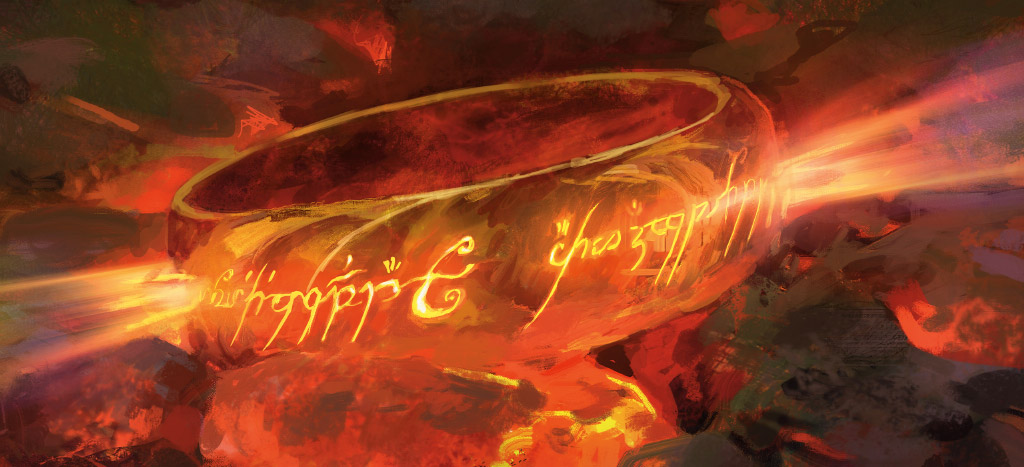
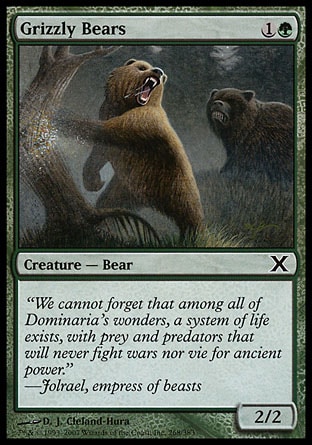
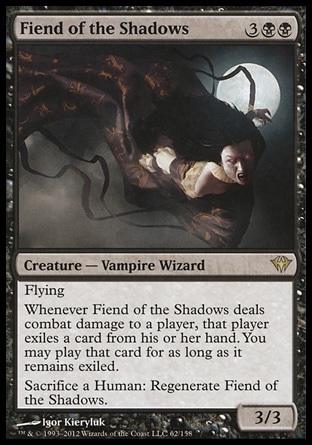
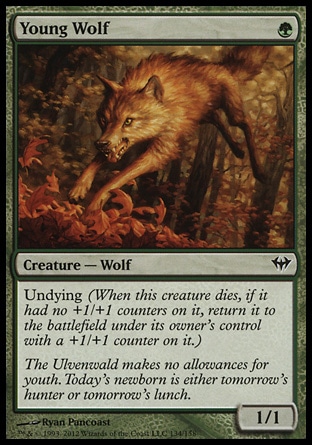
Picture a player in control of Vendilion Clique (4/2), Briarberry Cohort (3/3) and Scion of Oona (1/1). Her opponent puts Thundermaw Hellkite on the battlefield, which, upon resolving its ability, deals one damage to each creature of the player, then taps. When SBA are checked for the first time, Scion of Oona, having been dealt lethal damage, goes to the graveyard. As that happens, the remaining faeries
. When SBA are checked again, Vendilion Clique (3/1) has lethal damage marked on it and goes bye-bye, which in its turn leads to Briarberry Cohort becoming 1/1 and sharing the fate of its kindred upon the third SBA check.